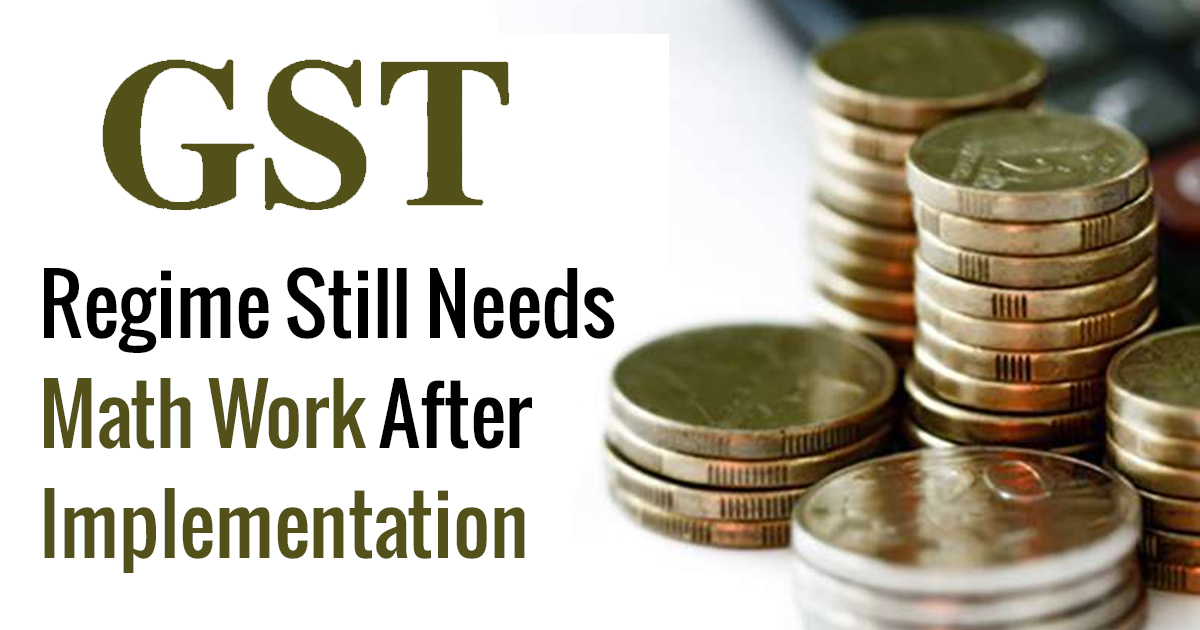Talking about the most intense and crucial tax system being applied within the Indian parameters of taxation would certainty require some aftermath even after the implementation and this will going to be soon. As per the sustained talks, In Budget 2017-18, Finance Minister Arun Jaitley utilized the conventional apparatus of setting an unobtrusive development to the normal income gathering in the current fiscal for indirect tax projections of the following money related year. Maybe in a start with, the administration may need to re-calibrate its budgetary tax accumulation gauge mostly after the goods and services tax (GST) becomes effective from July.
Read Also: Timeline of GST Implementation in India, So Far!
GST accumulations so made are then to be part similarly between the Center and states. Yet, since there are no dependable appraisals of consolidated VAT accumulations of states, Jaitley couldn’t extend the Center’s income from GST in 2017-18. By that measuring stick, 2017-18 will be an alternate year contrasted and the past. Mid-way, GST will kick in by subsuming all central indirect taxes, for example, central excise and service taxes as likewise state demands like VAT into one. Likewise, Parliament needs to pass two supporting GST legislations and each of the state needs to favor one legislation. Adhia said the heads of excise and service tax in the Budget appraisals can be expelled once GST comes in. The GST income accumulations can be touched base without a moment’s delay the almighty GST Council, headed by Jaitley, fixes tax rate for each good and service.
Adhia also added that “Right now, we have not put them under the head of GST because till the law is passed (by Parliament and state legislatures), we cannot account under GST. So, we have taken the normal estimate of excise and service tax collection. We have taken a very modest growth rate of about 9 percent of indirect tax. Because of GST, we may have to wait and watch. So, we are being conservative in the estimate.” “We can change it (budgetary heads). We can remove the head of excise and service tax and bring in GST. That can be done administratively even from July 1. The government can re-appropriate between two Budget heads.” he added
Recommended: What is Operation Clean Money by Income Tax Department?
This development is fundamental because of 6.3 for each penny development in accumulations from essential excise obligation on petrol and diesel. Indirect taxes have three noteworthy segments – Customs, central excise and service tax. While projections of Customs income will keep on being same through 2017-18, those for excise and service tax may be adjusted as the same is to be subsumed under GST. For 2017-18, Jaitley has anticipated excise accumulations to ascend by 5 for each penny to Rs 4.06 lakh crore over overhauled gauge of Rs 3.87 lakh crore for the present year. Altogether, the administration appraisals to gather about Rs 9.27 lakh crore from indirect taxes next fiscal, up 9 for every penny more than 2016-17. Service tax receipts are anticipated to ascend by 11 for each penny to Rs 2.75 lakh crore. Traditions income is anticipated to climb 13 for every penny to Rs 2.4 lakh crore. The overall nature will disclose upon the implementation while the financial corridors would seemingly fit into the tax base evolved recently.
